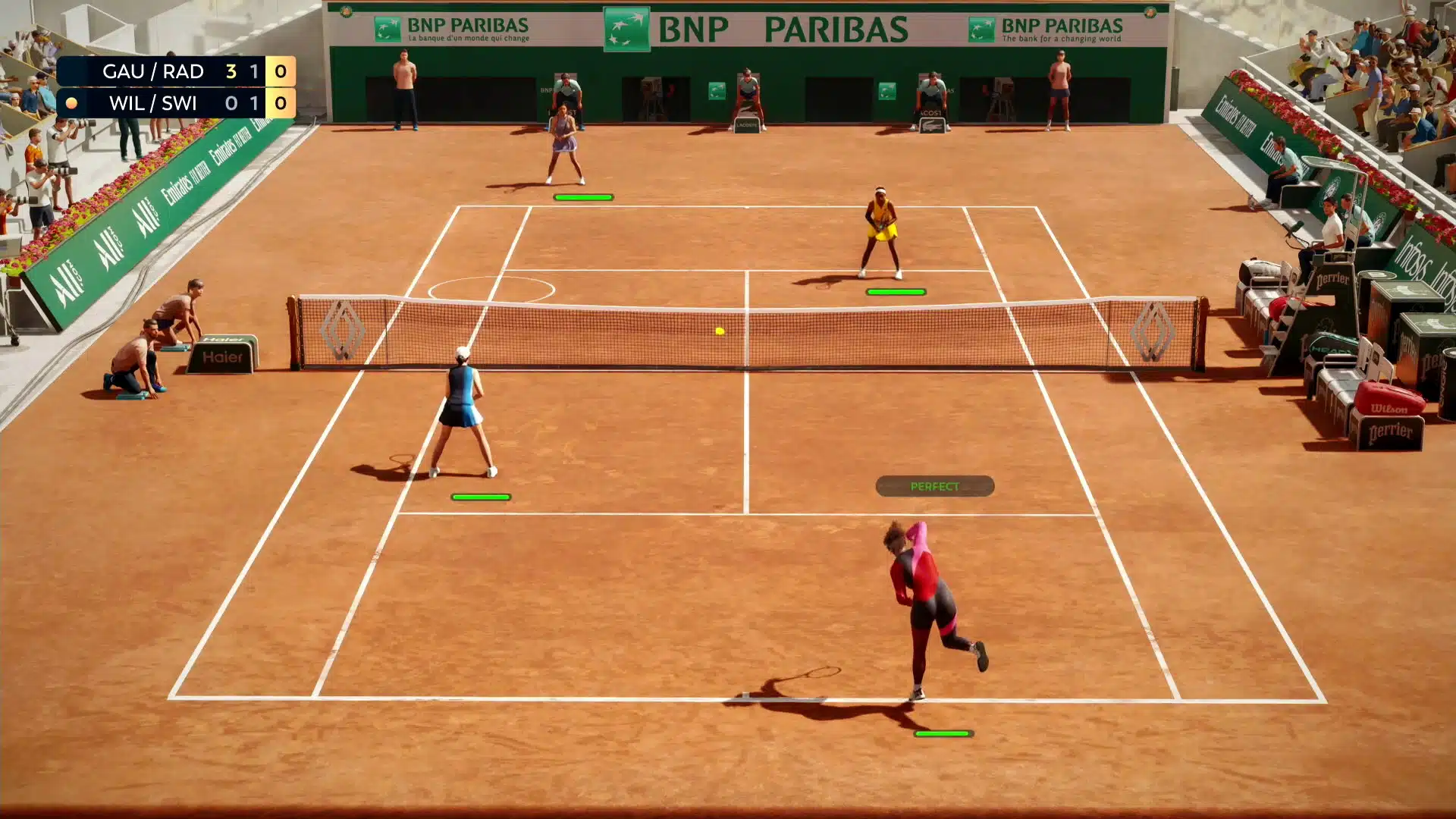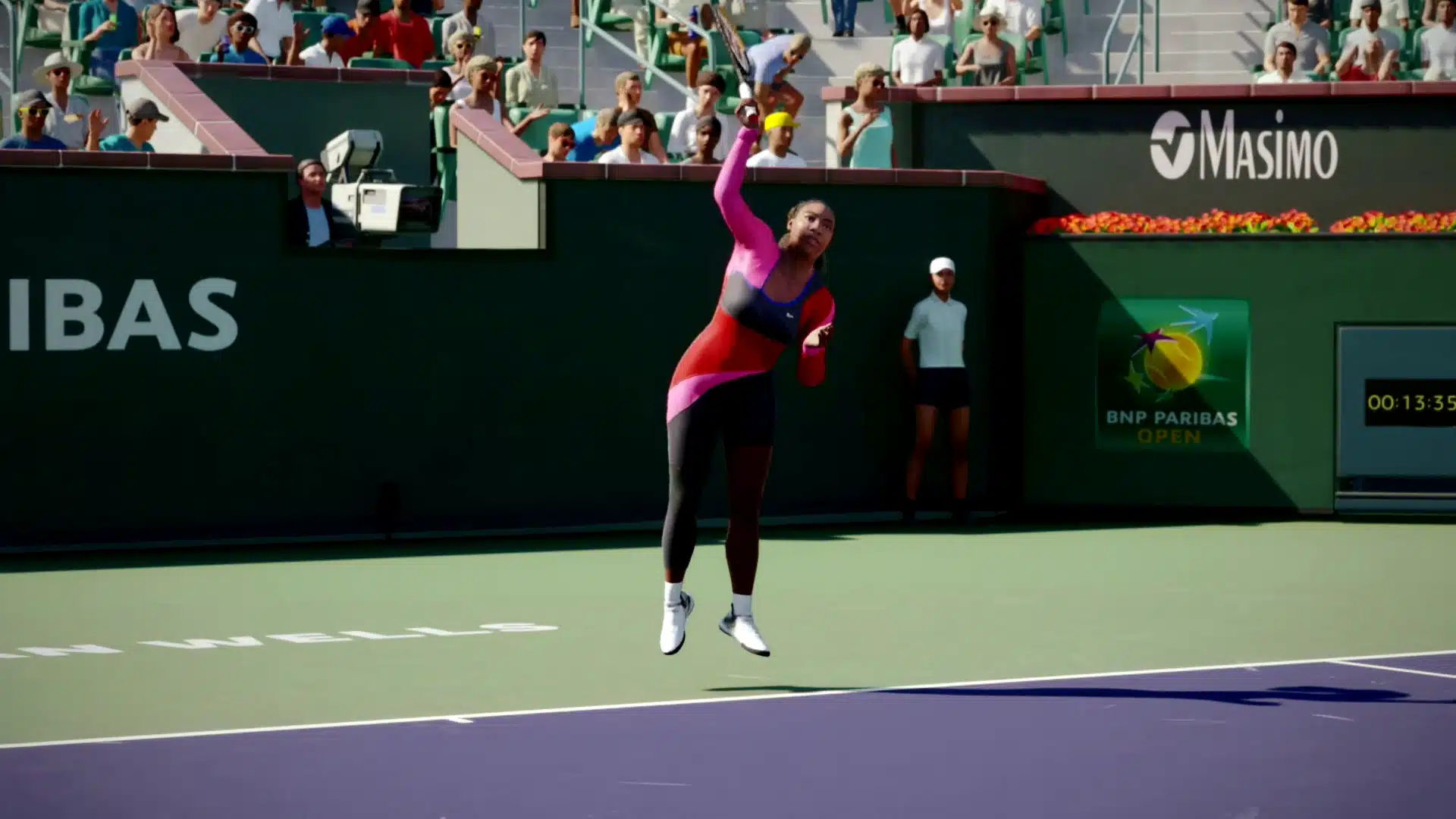As you read this at print time, the tennis world is currently playing through a tournament called the BNP Paribas Open. It has already featured a few upsets, including the number one-ranked tennis player Novak Djokovic losing to the 123rd-ranked 20-year old Luca Nardi. Early in the morning last week, however, tucked away into a meeting room at the La Quinta Resort in Indian Wells, California, MP1st was among a handful of select outlets allowed some early hands-on time with TopSpin 2K25, the latest entry in the Top Spin series, and the first in over 13 years. After all this time, could things come together to produce a tennis game fans the world over have been waiting for? We have our initial impressions available now.
- Related Reading: TopSpin 2K25 Releases This April 26; Features, Different Editions and More Smash Out
Learning the Ropes
After a late-night flight into the Palm Springs Airport (which I love for having its acronym as PSP), we were up bright and early, ahead of the day’s festivities. During the BNP Paribas Open was the 20th annual Desert Smash, a celebrity charity tournament that featured tennis pros and celebrities battling it out on the court, along with live and silent auctions, with all proceeds benefitting the Charlize Theron Africa Outreach Project, with its namesake also a willing participant in the tournament.
But first, the schedule called for us to get our hands on the game! After a brief presentation, we began with some tutorials. It had been over a decade since the last game, after all, so controls needed to be re-learned, mechanics re-taught. We were given access to the five basic-level tutorials, just enough to give us a handle on the gameplay, and then allowed to run through a few Exhibition matches at our choice of five stadiums available for our build of TopSpin 2K25. The tutorials were voiced by tennis legend John McEnroe, who does sound genuinely excited to teach you about the game.

Mostly Intuitive Controls
Controls are perhaps what you might expect from a tennis game. You move your player with the left analog stick, and perform returns by holding a face button. When the ball is headed in your direction, a meter appears above your player’s head, with a small green section on its right. Simply releasing the face button at the proper moment will result in a strong hit, while releasing too early or too late will result in a sloppy or even missed hit. As the shot is being readied, the analog stick shifts roles from moving the player, to adjusting the spin on the ball in an effort to get it to bounce on the other side of the court where your opponent(s) aren’t. The meter may be simple, but it requires some getting used to and can become a major distraction if you focus solely on it and forget to try and predict where your opponent will try to return the ball. That being said, it was easy to fall into a rhythm of holding and releasing the button as the ball traveled back and forth across the court. Eventually, the meter sort of fades into the background, as you are able to use your peripheral vision to gauge your accuracy while you focus on planting the ball exactly where you want it. There’s a satisfying learning curve, one that is probably difficult to master on harder difficulty levels.
Speaking of difficulty, one of our presenters recommended that we start the game on Easy or even Very Easy, because it had likely been a while since we had played any tennis game, never mind TopSpin. But after playing through the basic tutorials, I felt confident enough to try Normal. Away I went, playing as Serena Williams against 19-year-old tennis prodigy Coco Gauff. Grizzled veteran vs. fiery youngster, it promised to be a close match, or so I thought. I lost the first game, but remembered what the coach told me, to stay out of “No Man’s Land,” and move back behind the baseline as soon as I returned a shot. With that in mind, I then proceeded to win the next six games, to win two sets to “love” (zero), as I breezed to victory. There were still plenty of close games, though, so I also relied on getting an accurate sense of timing down as I attempted to make good contact.

Bring on the Challenge!
Up next, I played as Roger Federer vs. Frances Tiafoe, in another generation-spanning duel that promised to be exciting. Whereas for the first game I played in the in-game depiction of the BNP Paribas Open in the most meta experience of the event, this time around I opted for the Rod Laver Arena in beautiful Melbourne, Australia. Amped up after my recent victory, I tempted fate and chose the Hard difficulty. After a back-and-forth game that included multiple deuces, Tiafoe finally got the better of me and I lost the first game. I won the next two games, then Tiafoe battled back to even things up at two games apiece. Despite a thrilling performance, Tiafoe wouldn’t win another game, as yet again I proceeded to win the remainder of the games to win two sets to “love.” Perhaps, it seems, even the Hard difficulty level isn’t all that, erm, hard?
I rounded out my session with a game of doubles. It was back to the ladies this time, with Serena Williams (me) and Iga Swiatek (CPU) vs. Coco Gauff (CPU) and Emma Raducanu (CPU). All CPU players were set to Hard, as I believed I was on a lucky streak. This match would take place at the Court Philippe Chatrier in Paris, France. It wasn’t even close. The CPU team won the first set with three straight wins, plus the first game of the second set before my team scrambled out a win. We won the next game, and started to build up a little bit of momentum. But Gauff’s team found their groove again and won the next two games to finish out the match, two sets to nil. So, Hard definitely seemed to be difficult at this level in doubles!

Heading Towards Launch
If there were any spots for criticism, it’d be in the usual areas where sports video games tend to break immersion. Stadium crowds were varied, as it was hard to spot any performing exactly the same moves, though the character models were all naturally low-poly. Animations on the professional athletes were smooth, though facial animations were occasionally awkward. There was also no sort of audio commentary outside of the PA announcer at each court. Assuming this entry performs well financially, perhaps these issues will be fixed in future iterations, or ideally even as post-launch support. Time will tell.
TopSpin 2K25 looks to be headed towards a successful launch next month. While this short hands-on session gave us a small sampling of the full game, what was shown by developer Hangar 13 and publisher 2K felt good, which for a sports game is perhaps more important than any other aspect. Look for our review when TopSpin 2K25 launches for the PlayStation 5, PlayStation 4, Xbox Series, Xbox One, and Steam platforms on April 26, 2024.
